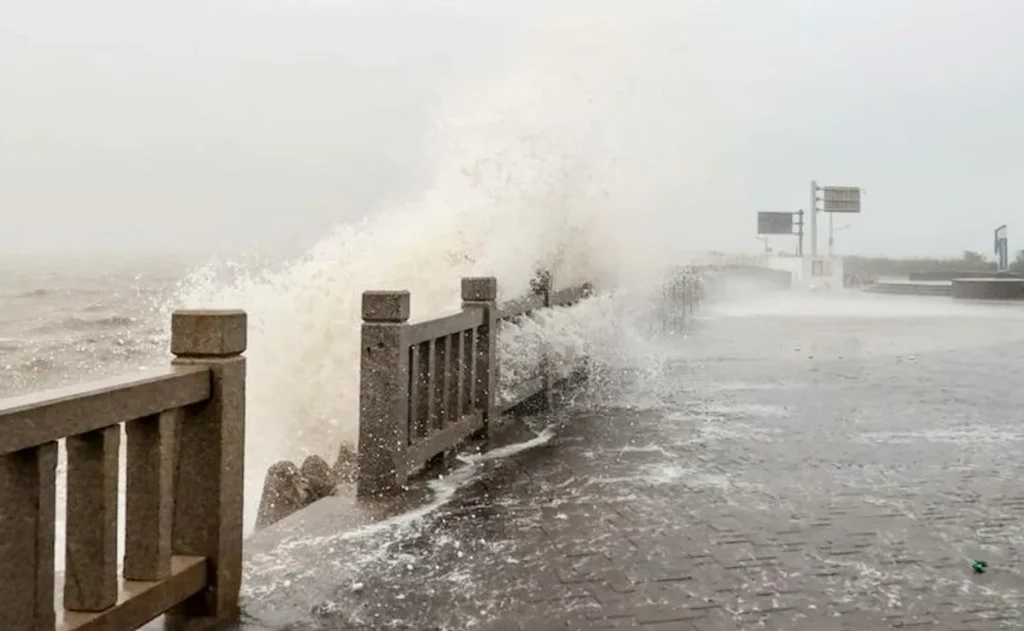The normally-bustling financial hub of Shanghai was brought to a standstill on Monday as residents sheltered at home to wait out the worst of Typhoon Bebinca, the most powerful tropical cyclone to directly hit the city in more than seven decades. Packing top wind speeds of 151 kph (94 mph) near its eye, Bebinca landed in the city of nearly 25 million around 7:30 a.m. (2330 GMT), state media reported, the strongest storm to strike Shanghai since Typhoon Gloria in 1949.
Rain lashed the city and strong winds felled more than 10,000 trees across Shanghai as more than 400,000 people were evacuated from at-risk homes in Bebinca’s path. More than 56,000 rescue workers were deployed and, by early afternoon, only one injury had been reported as a result of the storm, according to state media reports.
The city’s two airports cancelled over 1,400 flights and more than 570 passenger trains were halted since Sunday evening, disrupting travel plans for many during the Mid-Autumn Festival holiday, a three-day public holiday in China. Parks and businesses were closed, and four districts in Shanghai upgraded weather alerts to the highest possible level. Some metro train services were disrupted, and highways and elevated roads were closed to traffic or had special speed restrictions in place.
Resorts in Shanghai, including Shanghai Disney Resort, Jinjiang Amusement Park, and Shanghai Wild Animal Park, were temporarily closed, and many ferries halted operations. The city’s residents were advised to stay indoors and avoid travel unless necessary.
Typhoon Bebinca’s impact was felt across the city, with reports of power outages, flooding, and damage to buildings and infrastructure. The city’s emergency services were on high alert, with rescue teams and medical personnel deployed to affected areas.
The Chinese government had issued warnings and advisories ahead of the storm’s landfall, urging residents to take necessary precautions. The country’s weather service had also issued a red alert, the highest level of warning, for the storm.
As the storm continues to move inland, concerns remain about potential flooding and landslides in affected areas. The city’s authorities have pledged to restore normal services and operations as soon as possible.
In the meantime, residents of Shanghai are bracing themselves for the aftermath of Typhoon Bebinca, one of the most powerful storms to hit the city in recent history.



